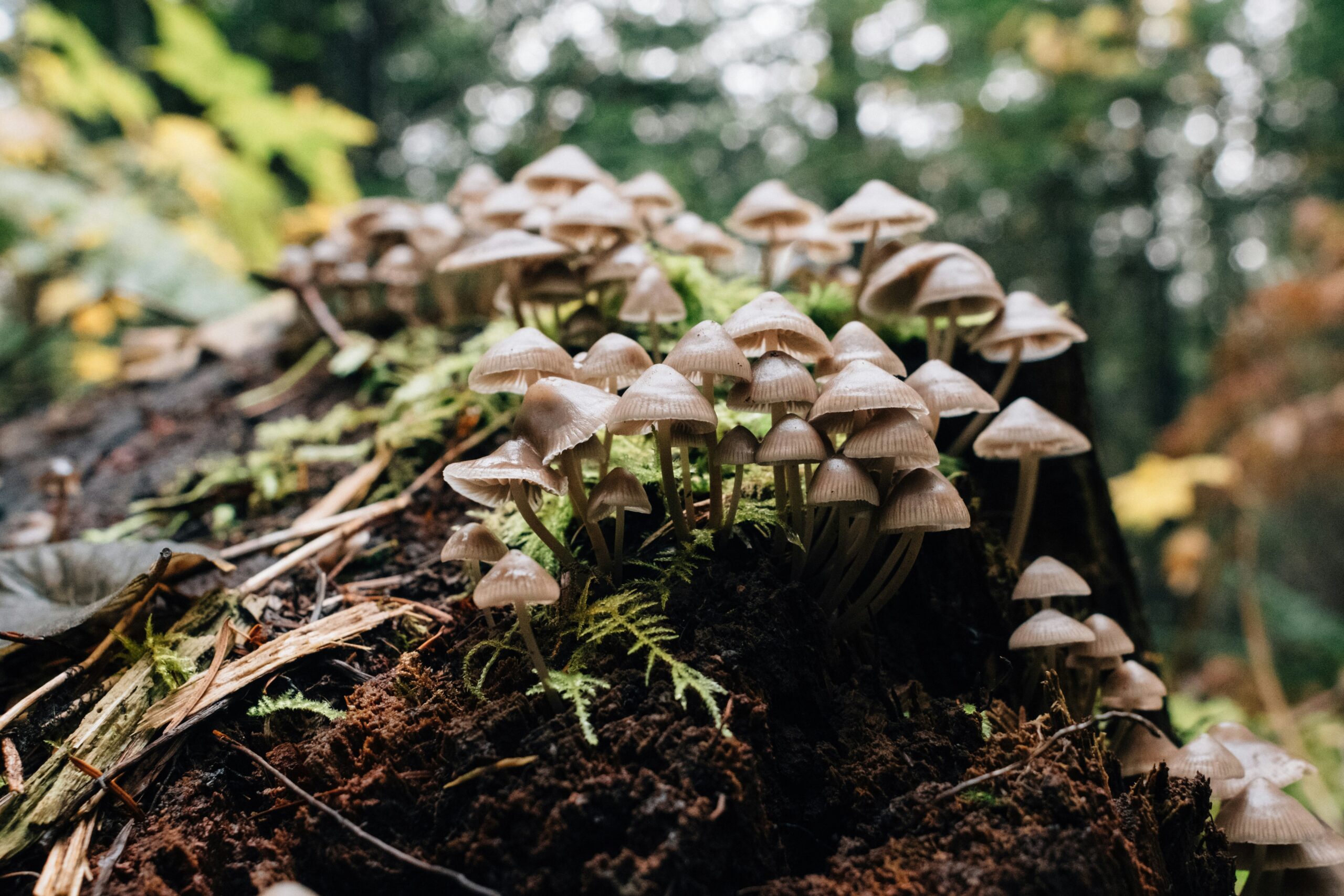God baked into creation a wild way to defeat death and decay. Their superpowers can reduce the toxicity of materials and resurrect them into new uses.
And they grow all around us.
Fungi are nature’s demolition and construction crew. Several businesses are putting their powers into action to take down dilapidated homes, reduce toxicity levels in underprivileged and impoverished communities, and redirect waste, from landfills to new construction lots.
Mycelium’s Remarkable Remediation of Toxic Materials
Fungi possess a wide array of enzymes that can break down complex organic molecules. Like massive digestive systems, fungi’s enzymes catalyze chemical reactions that convert toxic substances into simpler, less harmful compounds.
Their mycelium—a network of thin, branching structures—are able to penetrate deep into material to access pollutants that might be buried in hard-to-reach areas. Once they’ve acquired these toxic substances, fungi can accumulate them within their cells or mycelial networks, removing those pollutants from the environment. From there, fungi can further break down, or metabolize, the compounds into less toxic forms.
Fungi can break down chemicals found in petroleum products, like crude oil and gasoline. They’re also able to degrade synthetic pesticides and PCBs, which are synthetic compounds used in electrical equipment and coolants. They can collect and immobilize lead, cadmium, mercury, and arsenic, sequestering these toxic metals and reducing their environmental impact.
And more! Fungi might be one of the most powerful agents to reduce waste, improve health, and fight a warming climate.
The City of Cleveland Uses Fungi to Take Down Dilapidated Houses
Fungi are at the heart of an effort to demolish old houses and transform communities across the city of Cleveland. According to a recent article from the BBC, “All of the material from demolition—the studs, the floors, cellulosic mass [the primary structural component of plants], and even things like ceiling tiles and asphalt material like roof shingles, can be mixed into substrate that then becomes good for growing fungus,” says Chris Maurer, founder of Cleveland-based architect firm Redhouse Studio.
“Fungi can eat the noxious waste from the abandoned homes. Heavy metals and other toxins are extracted and captured in the mushrooms that grow, while the substrate leftovers, including the mycelium, are compacted and heated to create clean bricks for new construction,” writes Nick Hilden, features correspondent for BBC. “The resulting ‘mycoblocks’ have a consistency akin to hardwood and, depending on the specifics of the manufacturing process, have been shown to be significantly stronger than concrete.”
The “Biocycler” program essentially diverts construction and demolition (C&D) waste away from landfills and back into the supply chain. This industrial waste accounts for an estimated one-third of the world’s waste volume, according to another company in the fungi business, Mycocycle.
Co-Creators of a New Creation
The most plain and seemingly insignificant of God’s creation possesses incredible healing powers for our planet, and it’s only been in the last few decades that we even began to understand fungi’s vital impact on the environment. All this time, fungi have been quietly at work, building fungal networks, breaking down toxins, and regenerating soil so that life might continue to flourish and thrive on earth. And we just started to study its effects in the mid-1900s.
“But God chose the foolish things of the world to shame the wise; God chose the weak things of the world to shame the strong,” Paul wrote in the New Testament of the Bible. “God chose the lowly things of this world and the despised things—and the things that are not—to nullify the things that are, so that no one may boast before him” (1 Corinthians 1:27-29 NIV).
God chose even the fungi, even mycelium, even mushrooms, to take down the most harmful and toxic chemicals and resurrect something good, beautiful, real, and true.
It’s exciting to see more and more co-creators with God discovering the power of creation and harnessing it for good to usher in a new creation (for more on a “theology of making,” read Makoto Fujimura’s book Art and Faith: A Theology of Making). Together with innovative minds, people everywhere can work for environmental justice, mercy, and restoration, to co-create with God a cleaner, healthier, and safer world for all.
For more about the power of fungi to transform our environment for good, check out the documentary, Fantastic Fungi!





 Copyright
2025
Root and Vine
Copyright
2025
Root and Vine